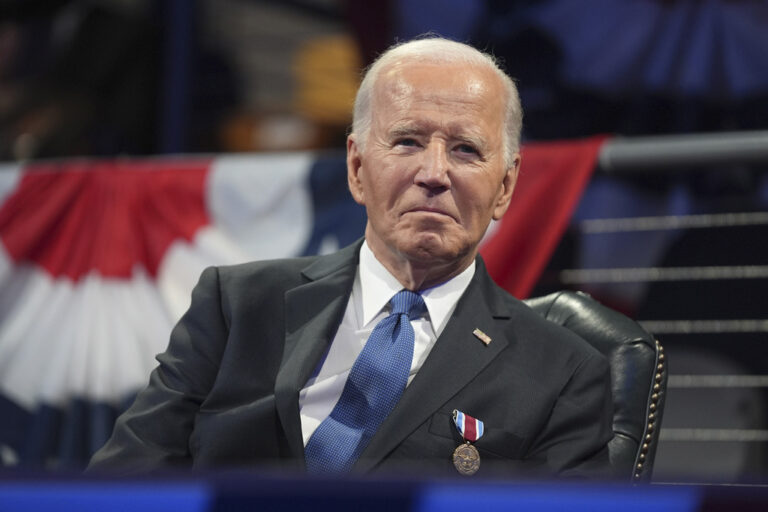A bombshell report by The Wall Street Journal has unveiled the extraordinary lengths to which President Joe Biden’s team went to manage his presidency, confirming longstanding criticisms about his ability to effectively lead. The report, based on interviews with nearly 50 insiders, portrays a presidency tightly controlled by a protective inner circle, shielding the oldest president in U.S. history from challenges that would test his stamina and cognitive acuity.
From the beginning of his presidency, Biden’s staff took pains to adjust the White House operations to accommodate his limitations. Meetings with cabinet members, lawmakers, and key advisers were infrequent and tightly scripted. Instructions to visitors were clear: keep interactions short and focused. If Biden was having an “off day,” meetings were sometimes canceled altogether, according to former aides. One national security official explained to a colleague, “He has good days and bad days, and today was a bad day.”
Biden’s fatigue during extended sessions became apparent early on, with staffers directing key officials to schedule discussions later in the day to align with his energy levels. Even during public appearances, aides were seen repeating basic instructions to the president, such as where to stand or exit. Critics noted the unprecedented level of “hand-holding,” describing it as far beyond what other presidents required.
The president’s age and protective cocoon were most glaring during his limited interactions with top cabinet members. Treasury Secretary Janet Yellen, one of the most critical figures in economic policymaking, rarely met one-on-one with Biden. Defense Secretary Lloyd Austin also experienced a significant drop in direct access to the president over time, despite leading during critical moments such as the wars in Ukraine and Gaza.
Instead, senior White House advisers, such as National Security Adviser Jake Sullivan and National Economic Council head Lael Brainard, acted as go-betweens, relaying information to and from the president. Lawmakers and cabinet officials increasingly relied on these aides rather than Biden himself, leading some to question who was truly driving the administration’s agenda.
Rep. Adam Smith, then-chairman of the House Armed Services Committee, revealed his frustration at being unable to speak directly with Biden ahead of the chaotic 2021 Afghanistan withdrawal. Smith said Biden’s optimism about the operation clashed with on-the-ground realities, and his attempts to warn the president were met with silence.
Despite these limitations, Biden’s inner circle insisted on moving forward with his re-election campaign, a decision that would unravel spectacularly. During a June 2024 debate with Donald Trump, Biden struggled to complete his thoughts and appeared visibly disoriented, sparking widespread concerns about his cognitive fitness. Democratic leaders, who had long accepted the White House’s assurances of Biden’s capability, could no longer ignore the reality.
Within weeks, Biden announced he would not seek re-election, handing the Democratic nomination to Vice President Kamala Harris, who went on to lose decisively to Trump. Many Democrats have since questioned whether Biden’s refusal to step aside earlier cost the party its chances of retaining the White House.
The report also sheds light on how Biden’s team worked to control his public image. Press aides curated news briefings to exclude negative stories about the president. Even campaign donors were instructed to submit pre-approved questions for Biden at events, a measure aimed at minimizing the risk of gaffes. Despite these efforts, Biden frequently flubbed answers, frustrating even his most loyal supporters.
Polling data, traditionally shared directly with presidents, was filtered through senior advisers who softened bad news. Democratic insiders became alarmed when Biden publicly mischaracterized his standing in the 2024 race, claiming it was a “toss-up” despite polls showing Trump with a clear lead.
While White House spokesperson Andrew Bates defended Biden’s record as “the most accomplished of any modern commander-in-chief,” critics argue that his presidency was defined by insulation and micromanagement. Sen. Joe Manchin, who frequently clashed with Biden, remarked that the president seemed to lack the stamina required for the job. “The job requires grinding every day, and I didn’t see him doing that,” Manchin said.
(YWN World Headquarters – NYC)












11 Responses
The only hope that the Democrats had to possibly keep the house was NOT Kamala Harris, whose appearances in public, though few, got progressively more disasterous. Had a new, eligible and competent candidate for presidency been chosen two years ago by the DNC, then maybe there was room for optimism. The democrats’ failures were probably the main catalyst to the election of Trump!
And yet, they wanted to re-elect him to another term!! Just shows how screwed up things really are here.
I think this is not. Bombshell most ppl knew much of this and assumed the rest
The WSJ report is nothing new. The REAL QUESTION is WHO was and is running our country? That would be the bombshell!
But 48% of Americans were wicked enough & evil enough & mentally crazy enough to still vote for his מכשפה who is an identical גלגול of crooked Joe since she didn’t see any need to change anything
Wow. Who knew?
It was the dems & “Dr.” Jill who were pushing for 4 more years. Insane.
This article documents that people surrounding Pres Biden – and also journalists – knew about his cognitive decline for several years and conspired to deceive American citizens about it. Journalists are liable to only lose their reputation, but politicians and, especially, career employees should be hayav.
The person responsible for deciding if we go to war or setting off nuclear weapons should not be walking off stage and trying to shake hands with a flag or nobody.
That was alarming and that was a coule of years ago.
And yet, with all that he did such an amazing job!!!
I’ve been waiting for this expose’ for 4 years. Everyone who wasn’t an addled leftist saw clearly through the leftist media cover up from day one that it wasn’t really Biden running the Executive branch and the he HD serious cognitive issues!